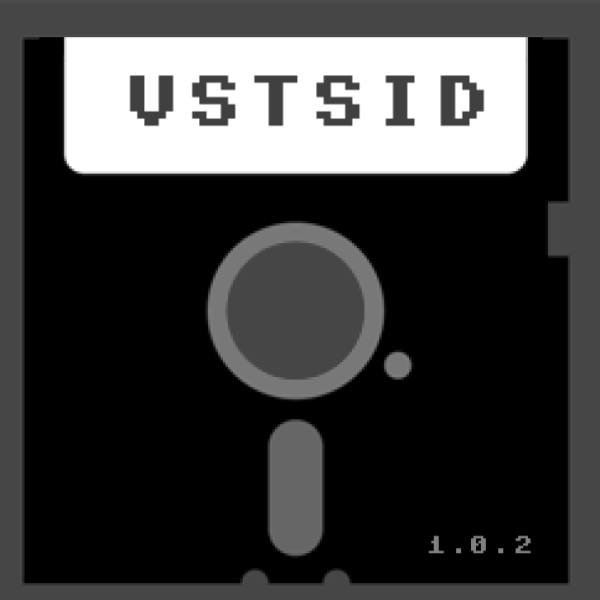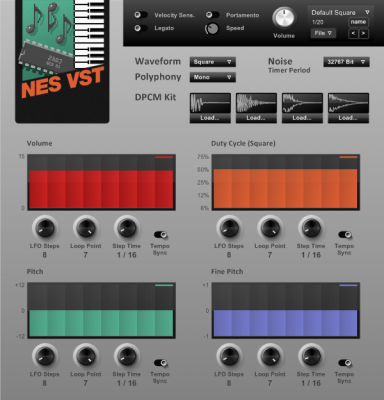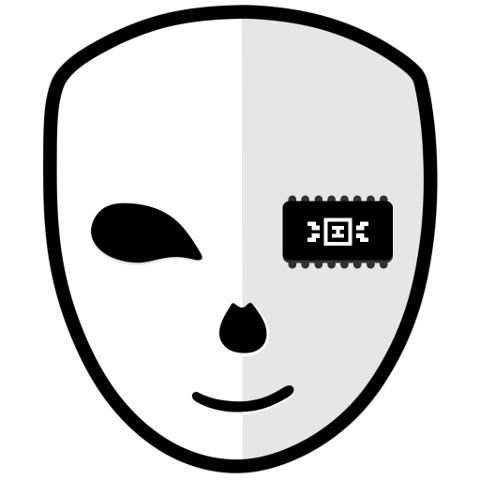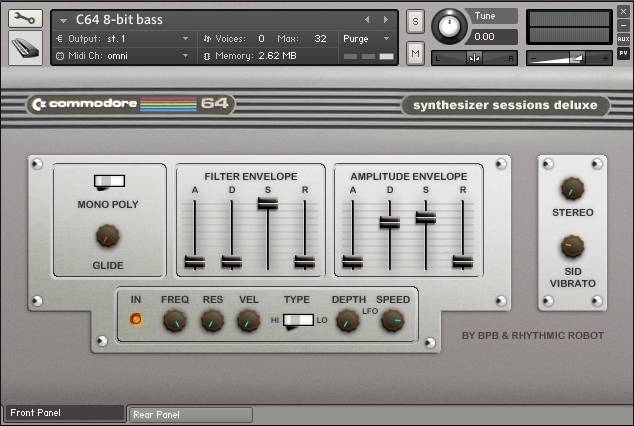
The Commodore 64 has an iconic sound that stands out from other 8-bit gaming systems. And while you can use expensive plugins to make C64 music, you don’t have to.
Thanks to VSTSID, you can have a pretty faithful recreation of the SID chip in your DAW. And you don’t have to pay a penny!
This VSTSID review explains how it works and how you can get the most out of its features.
VSTSID mimics the Commodore 64's SID chip, delivering gritty-sounding pulse waves in all their lo-fi glory. It lets you easily perform the bubbly chiptune arps, and comes complete with envelope controls and other filter settings.
What Is VSTSID?
VSTSID is a free virtual instrument that mimics the iconic sound of the Commodore 64’s SID chip. It’s made by an independent developer who goes by “igorski”.
You can use VSTSID in almost any DAW that supports VSTs, such as Cakewalk, Logic, Cubase, and so on.
It comes with full ADSR envelope controls, plus other filter and mod controls (more on all those below). VSTSID also makes it super easy to create those bubbly arpeggios that helped define the retro VGM sound.
All in all, it’s a very basic instrument. But it’s worth checking out if you’re a fan of the Commodore 64 or chiptune music.
Listen to Some Demos
Getting Started With VSTSID
To use VSTSID, simply go to igorski’s website, download the plugin, and unzip the files. Inside, you’ll find folder options for Mac and Windows (32-bit and 64-bit).
Open the appropriate folder, then either drag/drop or copy/paste the plugin into your VST folder.
Follow any additional steps required for your DAW.

VSTSID’s Features
VSTSID is a fairly basic instrument, so you won’t find much in the way of complex features. That said, it’s still worth pointing them out.
Automatic Arpeggios
If you play three or more notes at a time, VSTSID will automatically play them in rapid succession. As a result, you get those bubbly arpeggiating tones that helped define the Commodore 64’s sound.
This is VSTSID’s best feature since you don’t have to dig into any settings. Just play a chord, and presto! Instantly beautiful, rippling triads.
It harkens back to the original hardware limitations. Since the SID chip only had three sound channels, playing chords wasn’t always possible. So rapidly playing notes like this helped give the impression of polyphony.
ADSR Envelope & Filter Controls
Envelope controls are standard for most synths and software instruments. So finding ADSR settings is no surprise here.
Likewise, VSTSID also has some standard filter settings:
- Cutoff
- Resonance
- LFO Rate
- LFO Depth
If you’re familiar with synth controls, you’ll feel right at home with these.

Ring Modulator
The Ring Mod Rate control makes your sound more abstract and glitchy.
With this feature, you lose almost any sense of tonality. But you can automate it for some interesting effects.
VSTSID Pros & Cons
For a free instrument, there’s plenty to love about VSTSID. That said, I have my issues with it. So, let’s go over the pros and cons.
Pros
- Authentic SID chip sound
- Automatic arpeggios
- Fully automatable controls
For starters, VSTSID really nails the Commodore 64’s sound. It’s not a full recreation of the SID chip. But it does a fabulous job mimicking it.
And as I mentioned earlier, the automatic arpeggios feature is arguably the biggest highlight. Just pressing three notes on my MIDI controller beats digging through settings and presets to find that exact sound.
Lastly, the ADSR, filter, and Ring Mod controls are all fully automatable within your DAW.
Cons
- Only one waveform
- Unwanted artifacts
- No drum sounds
As you’d expect from any free plugin, you’ll find some limitations.
The first notable drawback is that VSTSID only produces one type of pulse wave. That’s mitigated a little by the filter controls, but there’s only so much you can do to change the core sound.
I also found that VSTSID produces some unwanted artifacts:
- Sustained notes have a “fade in and out” effect, which can sound cool. But most of the time, I’d rather have a consistent tone.
- Some note attacks have a “click” to them. It’s mostly noticeable with repeated patterns, especially in lower frequencies.
On top of that, this plugin doesn’t offer any noise options. So if you need drums, you’ll have to use other instruments and samples.
Alternatives To VSTSID
VSTSID isn’t the only chiptune maker out there. We’ve found some other tools that replicate sound chips from the Commodore 64 and other 8-bit consoles. You can find all these instruments (and more) in our article, The Best Chiptune Software For 8-Bit & 16-Bit Music.
-
Free Download Read Our Review
One of the all-time greatest virtual instruments for creating 8-bit music. This plugin mimics the NES sound hardware and has an elegant design that's super easy to use. Best of all, it's 100% free!
-
$149Buy Now Read Our Review
Super Audio Cart includes sounds from 15 classic game consoles and computers spanning several decades. It's the most comprehensive library of retro game samples ever assembled.
We may earn a commission if you make a purchase, at no additional cost to you.
-
$64Buy Now
A boutique synthesizer that runs in the Reaktor engine. It recreates the iconic gritty sound of the Commodore 64's SID sound chip. Make sounds from scratch, or use one of the 300+ presets.
We may earn a commission if you make a purchase, at no additional cost to you.
-
Get DefleMask Now Learn More
With perfect emulations of eight retro sound chips, DefleMask offers one of the most authentic ways of producing chiptune music — just like the early game composers.
-
Free Download Read Our Review
A free Kontakt chiptune instrument with over 30 patches. Everything was sampled from a real Commodore 64 computer. Plus, it comes with other filters and envelope controls to help customize your sound.
We may earn a commission if you make a purchase, at no additional cost to you.
Final Thoughts: Should You Download VSTSID?
If you want to write chiptune music on a budget, then you can’t go wrong with VSTSID. It really nails the Commodore 64’s sound.
Plus, it offers a super easy way to write authentic-sounding 8-bit music in your DAW.
But VSTSID does have some major limitations. With only one waveform and a lack of noise/drum sounds, you’ll need to supplement it with other instruments and samples.
Despite those limitations, it’s worth adding to your collection of chiptune plugins.
VSTSID mimics the Commodore 64's SID chip, delivering gritty-sounding pulse waves in all their lo-fi glory. It lets you easily perform the bubbly chiptune arps, and comes complete with envelope controls and other filter settings.
Learn More About Writing Commodore 64 Music
It’s one thing to write music using VSTSID and other plugins. But it’s another thing to make your music sound authentic to the era.
We’ve put together a guide on how to make Commodore 64 music. Check it out for more tips and tricks.





